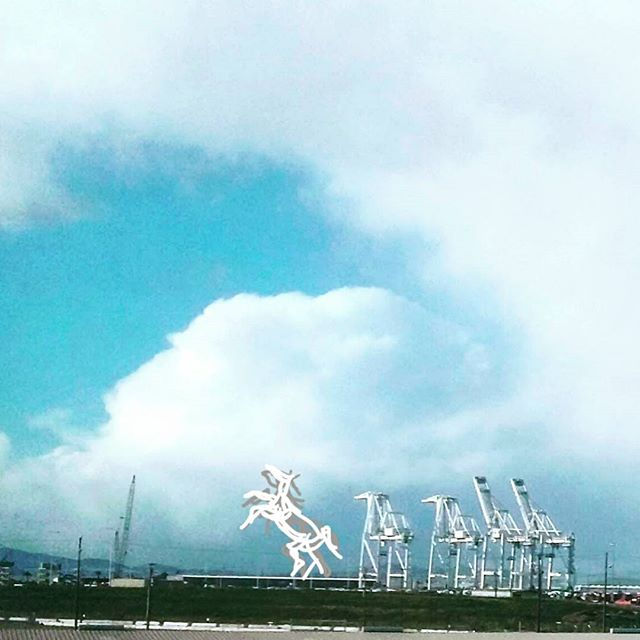Growth of Economy at what cost?
- Sakthi R

- May 18, 2020
- 7 min read
from the stance of a Sustainable Realist

•Economy - Environment integration : economic decisions to have regard to their environmental consequences.
•Inter-generational obligation: current decisions and practices to take into account of their effect on future generations.
•Social justice: all people have an equal right to an environment in which they can flourish
•Environmental protection : conservation of resources and protection of the non – human world.
•Quality of life : a wider definition of human well – being beyond narrowly defined economic prosperity.
•Participation : institutions to be restructured to allow all voices to be heard in decision making .
India & the world
•Prospect of a growing India has become an excuse for inaction by industrialized countries.
•Cynical about the international process of global negotiation.
•Per capita based burden sharing architecture.
•India should do its part and not to link legally these efforts to international process.
•Only actions that are externally supported will be subject to actions of measurement, reporting and verification.
•The measures and policies designed to meet domestic objectives will remain outside the scrutiny of the international process.
•Business opportunities free of the obligations and constraints of an international regime and corresponding domestic constraints
76% of Indians live under $2 per day making them poor by the standards of the developing world. For example, an Indian earning $2 a day (and 75% of Indians are below this level) would take about 24 years to reach the US poverty line of $13 a day at an ambitious growth rate of 8% a year. •While industry has been growing at about 6-7% from 1990 to 2005, energy use for industry has grown at a more sedate 3%.
•For example, through a modelling exercise, they show that even if the industrialized world takes on 40% cuts from 1990 levels by 2030, if the emerging economies only cut the rate of growth of their emissions by 20%, global emissions are likely to well exceed 500 ppm. •Indians own about 12 light motor vehicles per thousand (Americans crossed this level of ownership in 1910), or about 12 million in total, consistent with a middle-class of 10 million.
Only 11% of Indian households consume more than 100KWh of electricity, while the average in the US is five times higher. A number of facts and factors make the Indian renewable energy market exciting for entrepreneurs and investors. Here are some highlights:
•India is the most developed renewable energy market in South Asia, with an annual turnover of about $500 million.
•India is the third most attractive country to invest in renewable energy, according to Ernst & Young.
•The demand-supply gap in power is currently at 8% and is one of the key drivers of renewable energy in the country.
•The Indian Government expects the renewable energy sector to grow to $19 billion from 2008 to 2012, with renewables making up 20% of the 70,000 MW of total additional energy planned from 2008-2012.
•India has been attracting over $2.5 billion every year in capacity addition
•The Indian Government has received proposals worth $30 billion for solar PV power plants alone (as of Dec 2009)
Why Sustainable Growth
•India’s economic development & “Growth” has brought its resources under great pressure.
•India is poised to be “water stressed” country: per capita water availability is below 1700cu.m, soon it will called as “water scarce” country as the water availability per capita will go down to 1000cu.m
•Ground water usage has increased in a decade’s time from 30% to 58%
•Water quality depletion has been seen in last decade i.e. 1996-2006.
•Biological oxygen demand has increased to 6mg/L.
•According to the global land degradation assessment (GLADA) for 1981-2003, 24% of land is degraded out of which India contributes to 1.75% and stands 2nd after china in terms of rural population affected by degrading areas.
•High demand and supply gap of wood in market is an additional factor in resource deployment. Out of 200MT of fuel wood, 49% comes from farm forestry and 51% comes from natural forests. (MOEF-2006)
100-115MT comes from natural forests which is 6-7 times higher than estimated supply from natural forests.
85-100MT is unsustainable extraction which is prime reason for degradation of forests and forests land. (Hertberg et al 2000)
Kyoto Protocol
Article 3.13 allows industrialized countries to bank carbon credits for future commitment periods and also buy from developing countries at a cheaper rate.
A few key global leaders—mostly G20 leaders and namely United States President Barack Obama, German Prime Minister Angela Merkel, and UK Prime Minister David Cameron—did not attend the conference. Their collective absence was seen as a reflection of their administrations’ failure to prioritize sustainability issues.
"In not attending, the prime minister is sending out a powerful signal that the UK government does not see sustainability as a priority", Joan Walley, chair of the UK environmental audit committee said to The Guardian.
The Agenda :
"Effective execution of Agenda 21 will require a profound reorientation of all human society, unlike anything the world has ever experienced a major shift in the priorities of both governments and individuals and an unprecedented redeployment of human and financial resources. This shift will demand that a concern for the environmental consequences of every human action be integrated into individual and collective decision-making at every level."
The Kyoto protocol could expire in 2012 with no secondary legally binding accord on limiting global emissions in place. This fear & the perceived lack of leadership by central players in the climate change debate—especially the United States—has elicited increasing concern about the long term prospects of the global climate change regime. This will either lead to a probable collapse of the protocol or formation of a stringent law binding protocol for all the nations. Hence, it is more important to force the main emitters like the U.S. To take initiatives rather than switching attention onto the developing nation.

Approach of Developed Nations
•President George W. Bush in July,2001 said before the COP8 “ Our economy has slowed, we have an energy crisis and the idea of placing caps on CO2 does not make sense.”
•President Barack Obama has not yet taken any action with the senate that would change the position of the United States towards this protocol. When Obama was in Turkey in April 2009, he said that "it doesn't make sense for the United States to sign [the Kyoto Protocol] because [it] is about to end". At this time, two years and eleven months remained from the four-year commitment period.
•“EU launches anti dumping probe against Chinese solar makers.” – Latest example of an attempt to change the focus of development.
•Industrialist countries claim to implement eco approach into the architecture with global certifications like LEED, however those norms don’t apply to the Indian scenario instead they open up market opportunities for the industrialist countries themselves.
Why International regime cannot be dependable
•The climate regime does not adequately address the sources of financing needed to help developing countries cope with climate change.
•While the meeting in Copenhagen including pledges by industrialized countries to provide $100 billion by 2020 to developing countries. To date, the total disbursed funds for climate change initiatives both within and outside of the UNFCCC, add up to only $2.1 billion.
•
•Seeking a more flexible and effective approach, the United States and other emitters have begun to turn to "à la carte multilateralism," focusing on smaller, less formal frameworks, such as the Major Economies Forum (MEF) and the Group of Twenty (G20).
•Historically, the depletion of resources has lead to war; the 1990 invasion of Kuwait by Iraq (as part of the Gulf War) was due to accusations of Iraqi ‘slant drilling’. Oil alone has always been the causes of conflict, because it is diminishing, proving the realists’ point.

Policies in India
Problems
Population, literacy, poverty alleviation, environment awareness
Ways
Law enforcement, Economic incentives, People’s participation, technological improvement
Things developing countries can do
community environment, resource pricing, fairer property and resource ownership, improving economic avenues for poor, economic status for women and abatement for industrial emissions

11th five year plan : Objectives :
•5% increase in forest cover
•Improvement in air quality and water quality
•Incorporating environmental education as a subject in schools.
Use of well designed material for public transport
•Jawaharlal Nehru Solar Mission
The Government will make it mandatory for mobile phone towers to be powered by solar energy, hoping to cut pollution and tamp down a key driver of diesel consumption in the country. Over 200 crores litres of diesel are used every year by up to 3,50,000 cell towers across the country. The new scheme is being spearheaded under the Jawaharlal Nehru Solar Mission that aims to increase solar power capacity by 20,000 MW BY 2022.
NAPCC :
•National solar mission
•National mission for enhanced energy efficiency
•National mission on sustainable habitat
•National water mission
•National mission for sustaining the Himalayan eco system
•National mission for a green India
•National mission for sustainable agriculture
•National mission on strategic knowledge for climate change
Key elements of Local Agenda 21:
Action within the local authority –
•Managing and improving local authority’s own environmental performance.
•Integrating sustainable development aims into the local authority’s policies and activities.
Action in the wider community –
•Awareness raising and education
•Consulting and involving the general public
•Partnerships
•Measuring, monitoring and reporting on progress towards sustainability

Indian answer to Global warming
Indigenously designed & manufactured wind mills, suitable for Indian tropical conditions.
Indigenous Solar PV panels, with bypass diodes.
Indigenous Hybrid power collectors (HPC) based on boost charging method.
Intelligent Blink Free Changeover (BFC) switch with feature of Voltage Protection using solid state relay (Contact less)
Revival of ancient root zone cleaning system for Sewage treatment.
Indigenous solar water heating system – DELTA with newly designed SMART HOME DISPLAY (SHD)
TOtal energy produced & Saved every year
•Solar water heating system-87000 units
•Solar wind hybrid production system- 60*300=18000 units.
•Energy saved using efficient fixtures such as
ØT5 tublights -212Nos*20W*6Hrs*365 days=9285 units
ØCFL-162Nos*30W*2Hrs*365days=3547 units
ØPower saver fans -117nos*30W*6Hrs*365 days = 7686 units
ØGreen lift – 5KW*60%*5Hrs*365 days = 5475 Units
ØThus total energy saved =25993 Units, say 26000Units
ØThus total energy produced & saved = 131000 units
•i.e. 229250 units required to be produced by grid power due to transmission & distribution losses. (as per the data of MSEB)
•Hence the Total CO2 emission saved – 195 tonnes / year
Policies in India
•The Government of India is promoting medium, small, mini and micro enterprises for manufacturing and servicing of various types of renewable energy systems and devices. The industrial policy measures include:
•Exemption of industrial clearance for setting up of renewable energy industry
•Allowance to private sector companies to set up enterprises to operate as license or generating companies
•Customs duty concession for renewable energy parts/equipment, including for machinery required for renovation and modernization of power plants.
•Excise duty on a number of capital goods and instruments in the renewable energy sector has been reduced/ exempted.
#climatechange #globalisation #energypolitics #growthrealists #sustainablerealists #sustainableidealists #geopoliticaldebate #energyandsustainability #energyconsumption #climateconference #kyotoprotocal #policymaking #globalpolicy #energypolicy
Bibliography & References:
•Toward a Progressive Indian and Global Climate Politics, Navroz K. Dubash
•Environment and development: China & India
•Climate Change Swindlers and the Political Agenda
•NAPCC : Government Of India ( Prime Ministers Council On Climate Change )
•MAART ‘11 : Opportunities & Challenges In India’s New & Renewable Energy Segment.
•Green politics, Edited By – Anil Aggarwal, Sunita Narain and Anju Sharma
•Green Development, By- W. M. Adams
•Politics and the Environment, By – James Connelly & Grahm Smith
•Thinking about development, By – Paul Streeten
•Sustainable Development: Exporting the contradictions, By – Redcliff M.
•http://www.greennewdealgroup.org
•http://www.undp.org.cuba
•http://www.lwv.org/files/CCTF_BP_CapTrade-CarbonTax.pdf
•http://ecosocialistnetwork.org/Wordpress
•http://benjaminwoodcock.hubpages.com/hub/Why-is-Sustainable-Development-Such-a-Contested-Concept




Comments